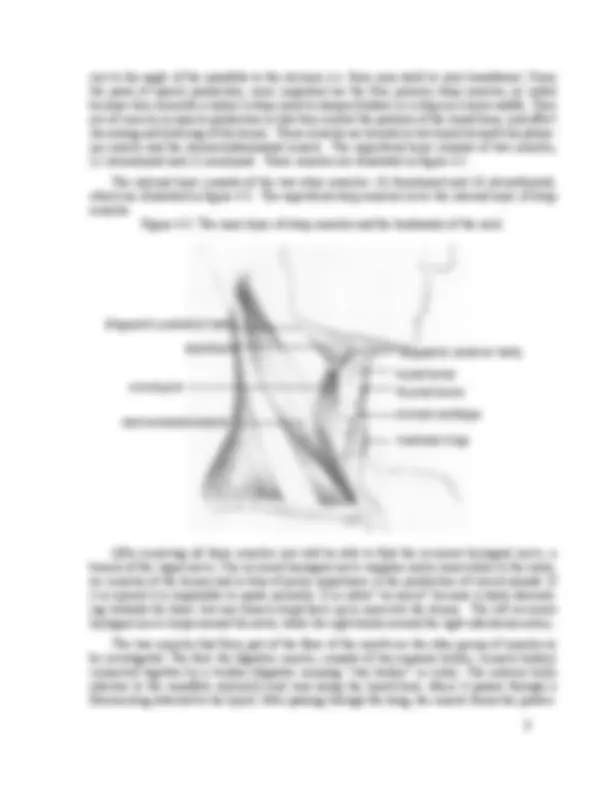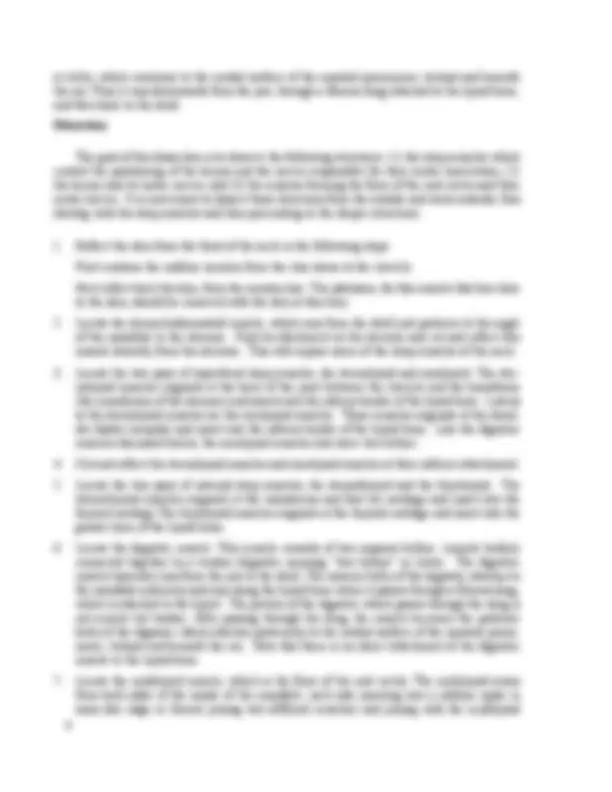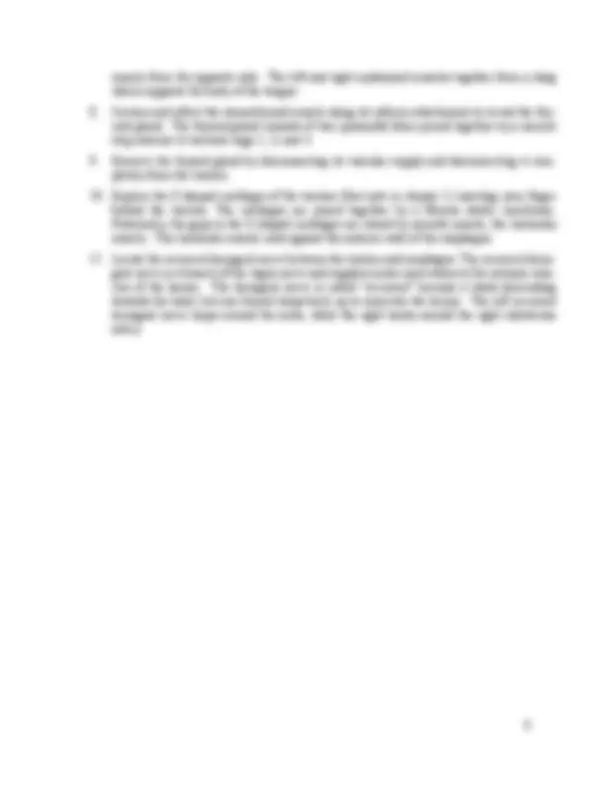





Study with the several resources on Docsity

Earn points by helping other students or get them with a premium plan


Prepare for your exams
Study with the several resources on Docsity

Earn points to download
Earn points by helping other students or get them with a premium plan
Community
Ask the community for help and clear up your study doubts
Discover the best universities in your country according to Docsity users
Free resources
Download our free guides on studying techniques, anxiety management strategies, and thesis advice from Docsity tutors
A detailed guide to dissecting the neck region, focusing on the strap muscles, larynx, and muscles forming the floor of the oral cavity. Students will learn about the functions of these structures, their locations, and the bony and cartilaginous landmarks used to identify them. The document also includes exercises to help identify the movements of these structures.
What you will learn
Typology: Slides
1 / 5

This page cannot be seen from the preview
Don't miss anything!




Overview and objectives of this dissection
The neck can be thought of as a column or pipe with several smaller pipes inside it. Each pipe is a wall of connective tissue; most structures run superiorly and inferiorly (up and down) inside one particular space between these walls of connective tissue. The outermost column is, of course, the skin. Anteriorly (in the front of the neck), immediately beneath the skin lies the platysma (this muscle will have been exposed by the peeling of the skin in the dissection of the facial regions, because it is thin and inserts into the skin). If you tense the muscles of your neck you can observe your platysma muscles. We will be more concerned with two groups of muscles: the strap muscles of the neck, which lie deep to the platysma muscle, and the muscles forming the floor of the oral cavity, underneath the tongue.
Before beginning the dissection, note the following bony and cartilaginous landmarks, which you should be able to feel on your own neck. It is worth gaining a good understanding of these landmarks before pursuing the dissection because they will be used to locate the muscles in the anterior region of the neck. These locations of these landmarks are illustrated in Figure 4.1. They are also shown in figure 4.3.
The hyoid bone, which lies between the floor of the mouth and the upper end of the neck. Palpate this bone with a thumb and finger on either side of your neck, close to the mandible. You should be able to feel the movements of the cornu (horns) of the hyoid bone by doing the following: Swallowing. Saying the vowel sequence [i-a]; noting the higher position of the hyoid bone for the higher vowel.
Saying a single vowel on different pitches. Usually, the higher the pitch, the higher the posi- tion of the hyoid bone, though individuals differ in this respect. The thyroid cartilage, which is the large cartilage of the larynx, forming the major part of the laryngeal prominence (Adam’s apple). This will be larger in men than in women. Feel the movements of the thyroid cartilage by repeating the exercises suggested above. The cricoid cartilage, which is inferior to the thyroid cartilage and sits on top of the first ring of the trachea. Its movements can also be felt by doing the previously suggested exercises.
Figure 4.1 A photograph illustrating where the hyoid, thyroid, and cricoid cartilages and the tracheal rings can be felt.
Figure 4.2. The sternocleidomastoid and the outer layer of strap muscles. The sternocleidomastoid muscle, a major muscle of the neck, runs from the skull just poste-
scapula
omohyoid
sternothyroid
sternocleidomastoid
New Picture on its way
hyoid bone
thyroid cartilage cricoid cartilage
or belly, which continues to the medial surface of the mastoid prominence, behind and beneath the ear, Thus it runs downwards from the jaw, through a fibrous sling attached to the hyoid bone, and then back to the skull.
Dissection
The goal of this dissection is to observe the following structures: (1) the strap muscles which control the positioning of the larynx and the nerves responsible for their motor innervation, (2) the larynx and its motor nerves, and (3) the muscles forming the floor of the oral cavity and their motor nerves. It is convenient to dissect these structures from the outside and work inwards, thus starting with the strap muscles and then proceeding to the deeper structures.
First continue the midline incision from the chin down to the clavicle. Next reflect back the skin, from the incision line. The platysma, the thin muscle that lies close to the skin, should be removed with the skin at this time.
muscle from the opposite side. The left and right mylohyoid muscles together form a sling which supports the body of the tongue.